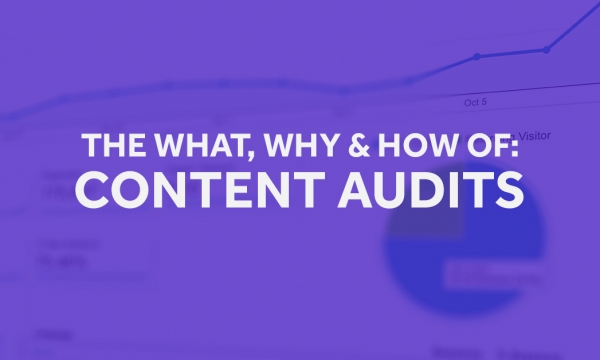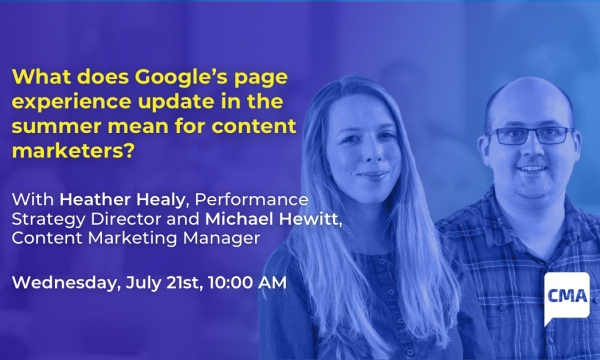
So, your branded content is well written, insightful and purposeful but, why is it going unloved?
Well, one of the biggest reasons is that whilst many brands understand their audience, what they don’t understand to the same degree is just how those audiences engage with them, and what content they seek at different stages of the purchasing pathway.
We’ve explained the importance of building an audience persona, in our latest whitepaper, How to Get Serious about Content Marketing, which involves much more than simply building a demographic profile, based on a series of generic factors such as gender, location, household income and interests.
Instead, your audience persona needs to be created alongside your purchasing process. This way, your content can be targeted not only at the right audience group, but also tailored for that audience mind-set.
Defining your buying process
The way in which your customers discover your products or brand, and how they eventually go on to purchase, is what should define the content you deliver to them at a given point. Different content types, different tones of voice and different content mediums are more effective than others at differing stages of the buying process.

At a very basic level, an audience typically goes through three key stages in a buying process:
Awareness
This is the point where the audience first becomes aware of your brand or your product. Typically, they may have come across your brand through search or above-the-line marketing channels.
Here, short-form content typically is the most appropriate – especially for B2C. The consumer simply wants to find a solution so immediate, easy-to-consume content that grabs the audience’s attention and makes it easy to purchase will be the most effective.
Consideration
This is the point where the prospect will be seriously considering purchase from at least one supplier. They may be looking to rationalise their purchase through case studies, product or service reviews, client testimonials or price comparison.
Your content at this stage of the process should focus on convincing the audience that you can provide the solution to their challenge. Case studies, reviews and testimonials are incredibly important, as is the quality of your sales copy.
Decision
At this point the audience is in a position to complete a purchase. Your content here should be focused on nurturing this need and encouraging them to commit.
The onus is on you to demonstrate your experience, expertise and specialism in your chosen area, so the consumer can be completely confident making their purchase.
By defining your buying process, and how your consumers behave at each stage of the process, you can effectively determine different types of content for each stage.
Build your audience personas
Building a profile of your target audience allows you to tailor your content and brand messages to individual groups based on their needs, expectations and behaviour. This is where building your personas alongside your buying process is extremely important, because different audiences will behave in different ways at different stages.
This process is essential to giving your content the best possible chance of successfully engaging your audience, meeting your business objectives and delivering a return on your investment.
As we have mentioned above, this is not about developing statements like “our audience is a professional 30-something female from Tunbridge Wells with a household income of £40k” (although these profiles can be helpful), but about understanding why and how an audience would be motivated to engage with your brand.

Therefore, at a basic level, this model should include:
Priority Needs
Understand what the customer problems and buying needs are. Are they buying to address a specific problem, or are they buying on impulse? Are they buying based on price, or on quality? Understanding this will set the tone of your content.
Success Measures
How are you going to measure how successful you are in capturing the attention of this audience? These could be both tangible metrics (direct sales, revenue etc) and intangible metrics, such as brand awareness or social engagement.
Barriers to purchase
What barriers to purchase exist in your buying process? Understand where these lie and how different audiences may react to them. Heavily price-conscious consumers may find delivery fees to be a barrier to purchase, whilst other customers may just require an extra level of reassurance over a considered purchase.
Whatever these challenges, understand what they are and develop a content plan to mitigate them.
Buying process
What process do your customers follow, and how does this fit with your typical purchasing process? Remember that your audience is not going to simply follow a linear process that you created just because you want them to. Your audiences are individuals that act in a capricious and often unpredictable manner. You need content that reflects this and tries to prevent customers from leaking from your process.
Decision process
What aspects of each product will the buyer assess in evaluating the alternative solutions available? What features and benefits are they looking for, and what reassurance do they need?
Matching those personas to your buying process
When you understand how your target audience engages with your brand and makes their purchasing decision, you can match content to each stage of the purchasing process. The way your target personas move through this purchasing process will dictate both the types of content, and the media you use to distribute it, be that owned, earned or paid.
Without matching these two processes together, you risk producing and distributing content to an audience in a way that doesn’t play an effective role in the long-term aim of converting a lead into a revenue generating audience. Using all of your audience data, including demographic profiling, needs, and purchase behaviour and matching this to your buying process, allows you to really target your content to achieve this ultimate goal.



